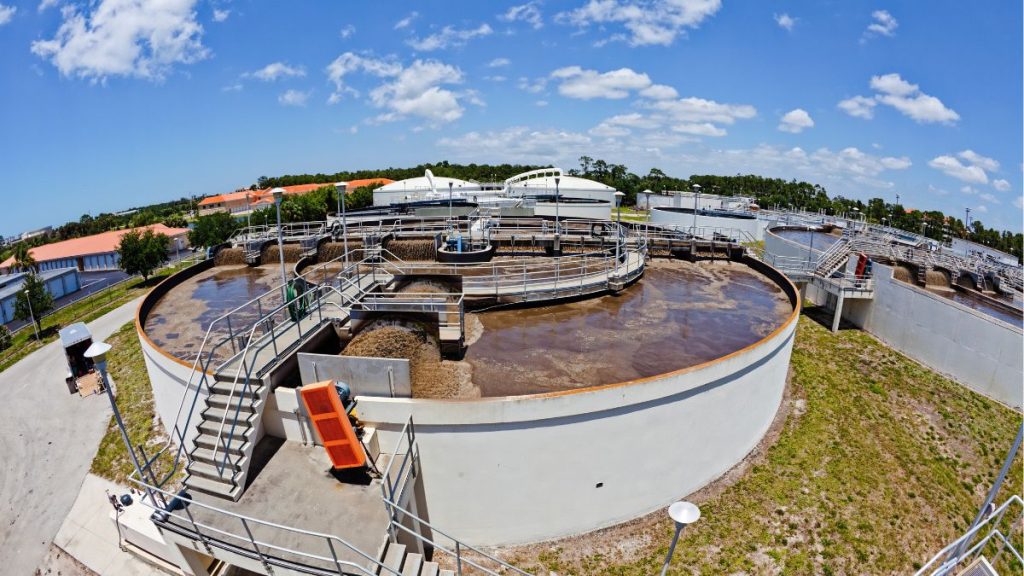Aerobic wastewater treatment is a wastewater treatment method increasingly used in various industrial sectors and public facilities. This technology utilizes aerobic microorganisms, which require oxygen, to decompose organic matter in liquid waste, producing cleaner and more environmentally friendly wastewater.
What is Aerobic Wastewater Treatment?
Aerobic wastewater treatment is a wastewater treatment process carried out with the help of aerobic microorganisms, which require dissolved oxygen to survive and grow. In this system, liquid waste flows into a treatment unit equipped with an aeration system to ensure sufficient oxygen availability for the microorganisms.
These microorganisms work to degrade organic matter in the wastewater into simpler compounds, such as carbon dioxide, water, and microbial cell biomass. This process not only reduces Biochemical Oxygen Demand (BOD) and Chemical Oxygen Demand (COD), but is also effective in reducing suspended solids (TSS) and nitrogen or phosphorus content, depending on the system used.
The advantages of this aerobic system include a relatively short retention time, high efficiency in treating organic waste, and a lower risk of odor compared to anaerobic systems.
How Does an Aerobic Wastewater Treatment System Work?
An aerobic wastewater treatment system consists of several main, integrated stages. Each system can be designed modularly and tailored to the characteristics of the wastewater and the user’s needs. The following explains the stages and technologies commonly used in aerobic wastewater treatment systems.
1. Pre-Treatment
Before entering the aeration system, wastewater typically undergoes a coarse filtration process to remove large solids, sand, and oil that can interfere with the biological process. This stage includes:
- Screen (bar screen or rotary screen)
- Grit chamber (sand settling)
- Oil & grease trap
The purpose of pre-treatment is to protect downstream equipment and increase the efficiency of the biological process.
2. Aeration Tank (Biological Reactor)
This is the heart of the aerobic wastewater treatment system. In this tank, organic waste is decomposed by aerobic microorganisms with the help of an aeration system that continuously supplies dissolved oxygen.
There are several types of aeration systems commonly used:
a. Conventional Activated Sludge (CAS)
This method uses activated sludge mixed with wastewater in an aeration tank. The microorganisms in the activated sludge effectively decompose organic compounds. The mixture is then transferred to a separator tank (clarifier) to separate the biomass from the clear water.
b. Extended Aeration System
This is a variation of CAS with a longer retention time. It is suitable for facilities with fluctuating organic loads or small volumes, such as residential areas, schools, or hotels.
c. Sequencing Batch Reactor (SBR)
This system treats wastewater in batches (time cycles). A single reactor performs aeration, sedimentation, and discharge in a single unit. SBR is suitable for limited space and offers flexibility in processing time.
d. Moving Bed Biofilm Reactor (MBBR)
Uses a carrier medium floating in an aeration tank to grow a biofilm. Microorganisms grow attached to the medium and decompose organic matter more stably. This system is suitable for high organic loads and a small footprint.
e. Membrane Bioreactor (MBR)
Combines biological processes with separation using microfiltration or ultrafiltration membranes. MBRs produce very high-quality effluent, even suitable for reuse (water recycling).
3. Secondary Clarifier (Secondary Sedimentation Tank)
After the aeration process, the mixture of water and biomass flows into the clarifier to separate the sludge from the clear water. Some of the settled sludge is returned to the aeration tank as inoculum (return activated sludge), while the rest is discharged as excess sludge.
Read Also: Why Solids Floating in Secondary Clarifiers?
4. Disinfection
Before being discharged into water bodies or reused, the treated water needs to be disinfected to kill any remaining pathogens. Some commonly used disinfection methods are:
- Chlorination (using sodium hypochlorite or chlorine gas)
- UV Disinfection (using ultraviolet light)
- Ozonation (using ozone gas)
The choice of method depends on the targeted quality standards.
5. Sludge Treatment
The byproduct of biological processes needs to be treated before being discharged. Some common methods include:
- Thickening
- Dewatering (using a filter press or belt press)
- Stabilization (using an aerobic or anaerobic digester)
Sludge treatment is important to reduce volume, prevent odor, and facilitate final disposal.
Advantages of Aerobic Wastewater Treatment
Some reasons why this system is a top choice:
- High efficiency in BOD and COD reduction
- Lower odor risk than anaerobic systems
- Short retention time, suitable for high-flow industrial needs
- System flexibility, can be integrated with reuse systems such as MBR
- Environmentally friendly, producing high-quality effluent
However, aerobic systems also have higher energy requirements due to the continuous use of blowers or aerators.
Read Also: Aerobic Anaerobic Wastewater Treatment: Definition, Systems, and Comparison
Support Your Aerobic Wastewater Treatment System with Lautan Air Indonesia
Proper wastewater management requires more than just technology; it requires a deep understanding of waste characteristics, accurate system selection, and long-term operational reliability.
With over 40 years of experience, we are accustomed to assisting various industries in designing and implementing aerobic wastewater treatment systems tailored to the needs of each facility. We believe that every wastewater treatment system presents unique challenges. Therefore, solutions must be tailored accordingly. Our approach goes beyond simply providing a product; we develop comprehensive, customized solutions.
If you are planning or considering upgrading your facility’s wastewater treatment system, Lautan Air Indonesia is ready to serve as your reliable partner. Contact us for a further consultation and find the best solution for your needs.



